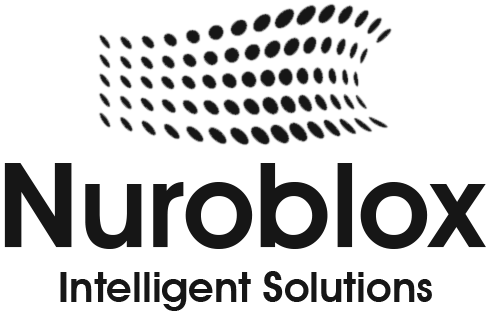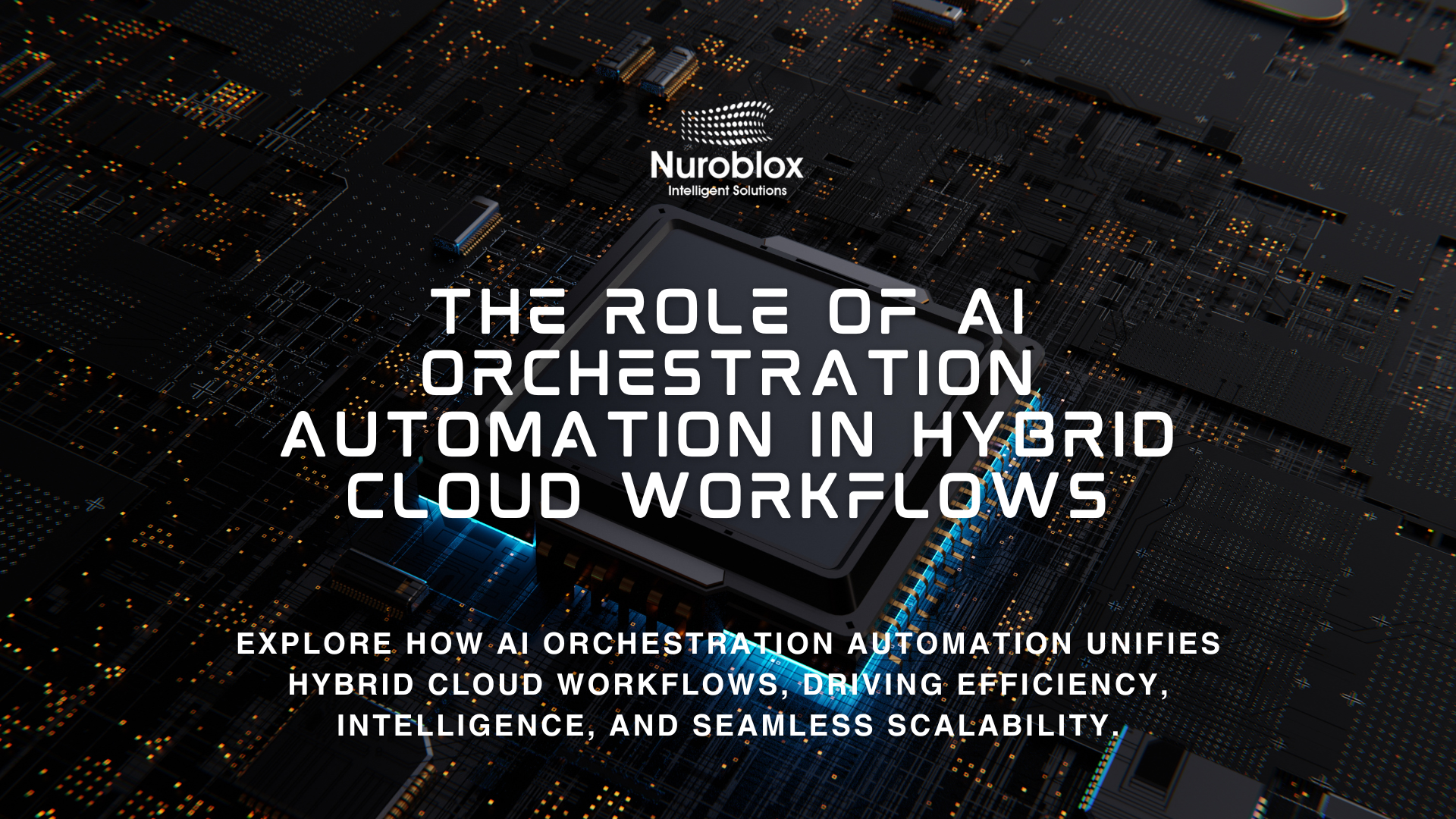The Role of AI Orchestration Automation in Hybrid Cloud Workflows
The modern enterprise runs on a complex web of infrastructure. Hybrid cloud environments, which blend the security of on-premise data centers with the scalability of public clouds, have become the standard for businesses chasing both agility and control. Yet, this distribution of resources creates a profound challenge – managing and automating workflows across disparate systems is fraught with complexity, inefficiency, and security risks.
This push toward smarter automation is a market imperative. The global workflow automation market is projected to reach $23.77 billion in 2025, with hybrid deployments expanding at a compound annual growth rate (CAGR) of 10.21%. As organizations navigate this landscape, AI orchestration is emerging as the intelligent layer that promises to tame this complexity, transforming fragmented workflows into autonomous, optimized, and secure business processes.
The Hybrid Cloud Paradox – Agility vs. Complexity
Enterprises adopt hybrid cloud architectures to gain a competitive edge, leveraging them for everything from scalable application development to disaster recovery and big data analytics. The goal is to place workloads in the most logical environment balancing performance, cost, security, and compliance needs. However, this strategic advantage introduces significant operational friction.
The core challenges include –
- Fragmented Management – IT teams often find themselves juggling multiple dashboards and toolsets to manage on-premise infrastructure, private clouds, and various public cloud platforms (like AWS, Azure, and GCP), leading to visibility gaps and inefficiencies.
- Inefficient Workload Placement – Manually deciding where to run a specific application is complex. Without intelligent analysis, organizations often make suboptimal decisions, leading to higher costs or poor performance.
- Operational and Security Bottlenecks – Automating processes that span different environments is difficult with traditional tools. This leads to manual handoffs, increased potential for human error, and inconsistent security policy enforcement across the infrastructure.
- Soaring Complexity – As the number of applications and services grows with one billion new apps expected by 2028 the complexity of managing a hybrid environment threatens to derail digital transformation efforts entirely.
Core Pillars of AI-Driven Orchestration
AI orchestration represents a paradigm shift. It moves beyond automating individual tasks to automating entire end-to-end processes that span multiple systems, applications, and human actors. Unlike conventional orchestration that follows predefined scripts, AI-powered systems leverage machine learning and predictive analytics to make autonomous decisions, turning rigid workflows into adaptive, self-optimizing systems.
A robust AI orchestration framework is built on interdependent pillars that work in concert to create a resilient and intelligent operational fabric for the hybrid cloud.
Intelligent Workload Placement
One of the most significant challenges in a hybrid cloud is determining the optimal location for each workload. AI orchestration engines solve this by continuously analyzing a host of factors, including real-time performance metrics, cost models, data sovereignty rules, and compliance requirements. The system can then autonomously decide whether to run an application on-premise for security, in a public cloud for scalability, or at the edge for low latency. For example, a financial services firm could use AI to automatically keep sensitive transactions on-premise for compliance while migrating non-critical data processing to a lower-cost public cloud provider.
Dynamic Resource Allocation
In a hybrid environment, demand fluctuates. AI-driven dynamic resource allocation uses predictive analytics to anticipate these shifts. By analyzing historical and real-time usage patterns, the orchestration platform can automatically scale resources up or down across different cloud environments before performance is impacted or costs escalate. This intelligent allocation of computational resources optimizes costs, prevents performance bottlenecks, and ensures that applications always have the power they need without manual intervention.
Self-Healing and Autonomous Resolution
The most transformative capability of AI orchestration is its ability to create self-healing infrastructure. These systems continuously monitor the health of workflows and infrastructure across the entire hybrid landscape. By employing anomaly detection, the platform can identify potential issues like a failing server, a network bottleneck, or an application error and initiate corrective actions automatically. This could involve re-routing traffic, restarting a service, or migrating a workload to a healthy environment. This proactive, autonomous problem resolution drastically reduces downtime and frees IT teams from reactive troubleshooting to focus on strategic innovation.

Implementing AI orchestration is not just about managing complexity; it’s about generating tangible business value. The benefits are clear, measurable, and strategically vital for any enterprise operating in a hybrid world.
Radically Improved Operational Efficiency
By automating complex, cross-environment workflows, AI orchestration eliminates manual handoffs and reduces the potential for human error. This process acceleration leads to significant efficiency gains. According to research from McKinsey, enterprises that leverage adaptive, AI-driven workflows report an average Return on Investment (ROI) of +32% year-on-year, driven by direct operational cost savings and enhanced productivity. Forrester further predicts that by 2025, enterprises using AI-enabled cloud services will see a 30% boost in operational efficiency.
Fortified Security and Compliance
Managing security consistently across on-premise and multiple cloud environments is a top concern for business leaders; 78% cite data security and privacy as the primary barrier to wider AI adoption. AI orchestration addresses this head-on. AI-powered security monitoring can analyze network traffic and logs in real-time across the entire hybrid estate to detect anomalies and identify threats that traditional tools might miss. Furthermore, this approach enables zero-trust security automation, where security policies are dynamically enforced based on real-time threat intelligence without manual intervention, ensuring a consistent and proactive defense posture everywhere.
Strategic Cost Optimization
Cloud costs can easily spiral out of control in a complex hybrid setup. AI orchestration provides powerful tools for cost optimization. By ensuring workloads run in the most cost-effective location and using predictive analytics to dynamically adjust resource allocation, businesses can prevent overprovisioning and wasted spend. This intelligent management ensures that organizations only pay for the resources they truly need while maintaining high service availability and application performance.
A Strategic Blueprint for Implementing AI Orchestration
Transitioning to an AI-orchestrated hybrid cloud environment requires a strategic, phased approach.
Phase 1 – Assess and Identify High-Impact Use Cases
Begin by aligning automation goals with key business objectives. Instead of automating for its own sake, identify complex, high-value workflows that are currently creating friction. Prime candidates are processes that span multiple systems, such as end-to-end supply chain management, intelligent customer service ticket routing, or automated financial compliance reporting.
Phase 2 – Select the Right Platform
The choice of an orchestration platform is critical. Look for solutions that offer –
- Seamless Integration – Robust API support and pre-built connectors are essential for layering the platform on top of existing enterprise systems (ERP, CRM) and cloud services.
- Hybrid and Multi-Cloud Native – The platform must be designed to operate across diverse environments, not just within a single cloud provider’s ecosystem.
- Security and Data Residency – For regulated industries, the ability to deploy in a private or hybrid model to comply with data privacy and residency laws is non-negotiable.
- Low-Code/No-Code Interface – To democratize automation and empower “citizen developers,” an intuitive, user-friendly interface is key for accelerating deployment and innovation.
Phase 3 – Establish Governance and a Center of Excellence (CoE)
To prevent “bot sprawl” and ensure consistency, establish a centralized governance model or a CoE early in the process. This body is responsible for overseeing the automation lifecycle, from development and deployment to monitoring and maintenance. Key functions include tracking model performance, managing compliance, and ensuring all automated activities adhere to internal security policies.
Phase 4 – Embrace a Culture of Continuous Improvement
AI orchestration is not a one-time project but an evolving capability. The future of automation lies with hyperautomation automating as many business processes as possible and agentic AI, where autonomous agents can reason, plan, and execute complex tasks collaboratively. Gartner predicts that by 2026, over 80% of enterprises will rely on orchestration as a core component of their hyperautomation initiatives. Forward-thinking organizations should build a foundation that can scale to this future, continuously refining processes and embracing more advanced, autonomous systems over time.
In 2025, enterprise agility will not be defined by who has the most advanced AI tools, but by who can make them work together most effectively. Success is no longer about isolated wins; it is about creating a synchronized, intelligent, and resilient operational fabric across the entire hybrid enterprise. AI orchestration is the strategic backbone that enables this transformation.
As you scale your hybrid cloud strategy, are you merely managing complexity, or are you architecting an autonomous, self-optimizing enterprise?


